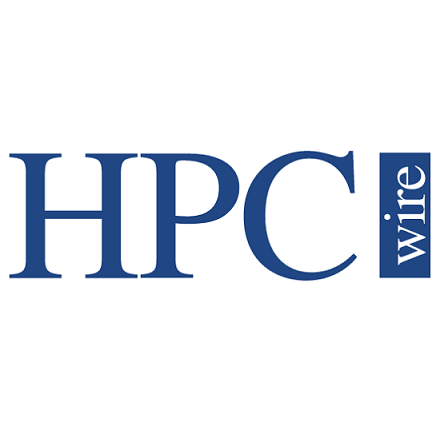
Canada’s Fastest Supercomputer Joins Ebola Fight
November 5, 2014
Canadian researchers have turned the country's fastest supercomputer into an Ebola-fighting machine. There are no approved vaccines for Ebola yet, but Chematria Read more…

Fractal Art Combines Math and Computing
May 12, 2014
You don't need to be a mathematician to appreciate the beauty and elegance of fractal geometries, those infinitely complex patterns that are self-similar across Read more…

US-UK Supercomputing Centers Join Forces
September 3, 2013
Lawrence Livermore National Laboratory's High Performance Computing Innovation Center (HPCIC) in the US and the Science and Technology Facilities Council (STFC) in the United Kingdom are combining efforts to help industry stakeholders in both countries leverage supercomputing to accelerate innovation and boost economic competitiveness. Read more…

Vulcan’s New Planet of Industrial Exploration
June 26, 2013
The eighth-ranked Blue Gene/Q Vulcan system at Lawrence Livermore National Lab has opened its doors for business--at least to companies reliant on advanced modeling and simulation. The 5-petaflop super has already been used in a number of incubator projects but now that they are extending the focus of.... Read more…

DOE Supercomputer Peers Into the Soul of the Universe
September 25, 2012
Argonne's 10-petaflop Blue Gene/Q will be used to gain a better understanding of dark matter. Read more…

Argonnites Prep Mira Supercomputer for Petascale Duties
August 1, 2012
DOE lab is taking applications from researchers who want time on 8-petaflop super. Read more…

IBM Specs Out Blue Gene/Q Chip
August 22, 2011
At the Hot Chips conference in Santa Clara last week, IBM lifted the curtain on its Blue Gene/Q SoC, which will soon power some of the highest performing supercomputers in the world. Next year, two DOE labs are slated to boot up the most powerful Blue Gene systems ever deployed: the 10-petaflop "Mira" system at Argonne National Lab, and the 20-petaflop "Sequoia" super at Lawrence Livermore. Both will employ the latest Blue Gene/Q processor described at the conference. Read more…

Shedding Light on High-Energy Physics
July 20, 2011
Researchers in high-energy physics are gearing up to test theories on Argonne, Oak Ridge iron. Read more…

- Click Here for More Headlines

Whitepaper
Transforming Industrial and Automotive Manufacturing
In this era, expansion in digital infrastructure capacity is inevitable. Parallel to this, climate change consciousness is also rising, making sustainability a mandatory part of the organization’s functioning. As computing workloads such as AI and HPC continue to surge, so does the energy consumption, posing environmental woes. IT departments within organizations have a crucial role in combating this challenge. They can significantly drive sustainable practices by influencing newer technologies and process adoption that aid in mitigating the effects of climate change.
While buying more sustainable IT solutions is an option, partnering with IT solutions providers, such and Lenovo and Intel, who are committed to sustainability and aiding customers in executing sustainability strategies is likely to be more impactful.
Learn how Lenovo and Intel, through their partnership, are strongly positioned to address this need with their innovations driving energy efficiency and environmental stewardship.
Download Now
Sponsored by Lenovo
Whitepaper
How Direct Liquid Cooling Improves Data Center Energy Efficiency
Data centers are experiencing increasing power consumption, space constraints and cooling demands due to the unprecedented computing power required by today’s chips and servers. HVAC cooling systems consume approximately 40% of a data center’s electricity. These systems traditionally use air conditioning, air handling and fans to cool the data center facility and IT equipment, ultimately resulting in high energy consumption and high carbon emissions. Data centers are moving to direct liquid cooled (DLC) systems to improve cooling efficiency thus lowering their PUE, operating expenses (OPEX) and carbon footprint.
This paper describes how CoolIT Systems (CoolIT) meets the need for improved energy efficiency in data centers and includes case studies that show how CoolIT’s DLC solutions improve energy efficiency, increase rack density, lower OPEX, and enable sustainability programs. CoolIT is the global market and innovation leader in scalable DLC solutions for the world’s most demanding computing environments. CoolIT’s end-to-end solutions meet the rising demand in cooling and the rising demand for energy efficiency.
Download Now
Sponsored by CoolIT
Advanced Scale Career Development & Workforce Enhancement Center
Featured Advanced Scale Jobs:
HPCwire Resource Library
HPCwire Product Showcase
© 2024 HPCwire. All Rights Reserved. A Tabor Communications Publication
HPCwire is a registered trademark of Tabor Communications, Inc. Use of this site is governed by our Terms of Use and Privacy Policy.
Reproduction in whole or in part in any form or medium without express written permission of Tabor Communications, Inc. is prohibited.
























